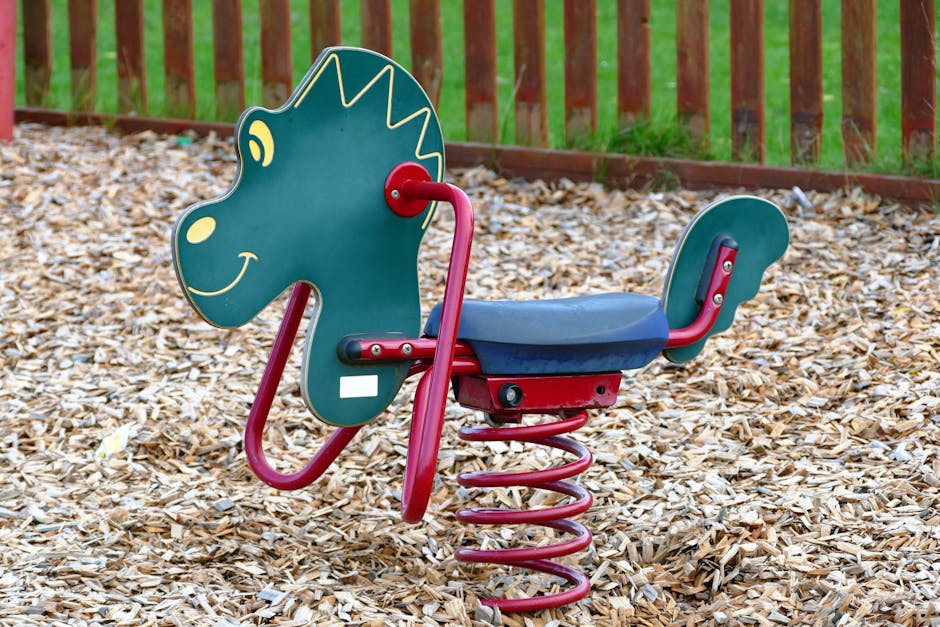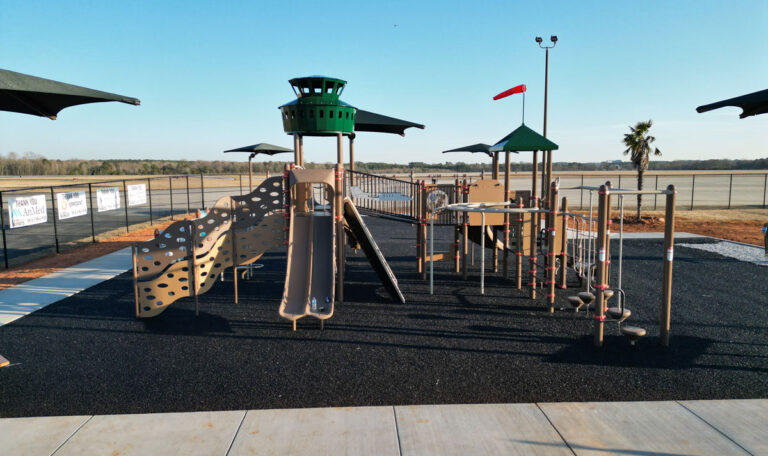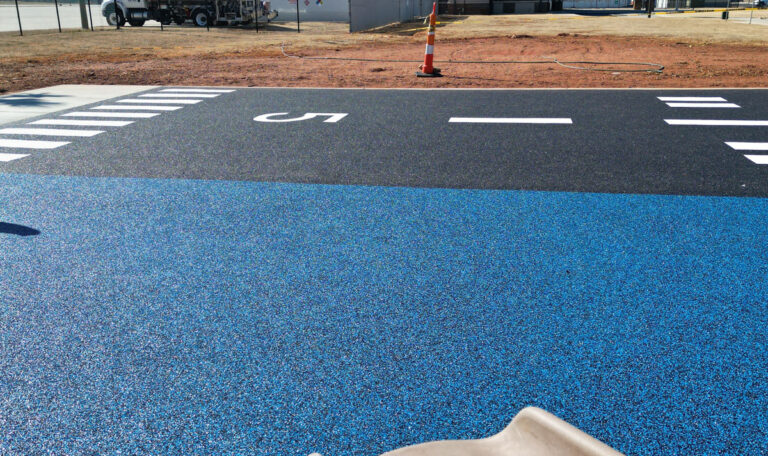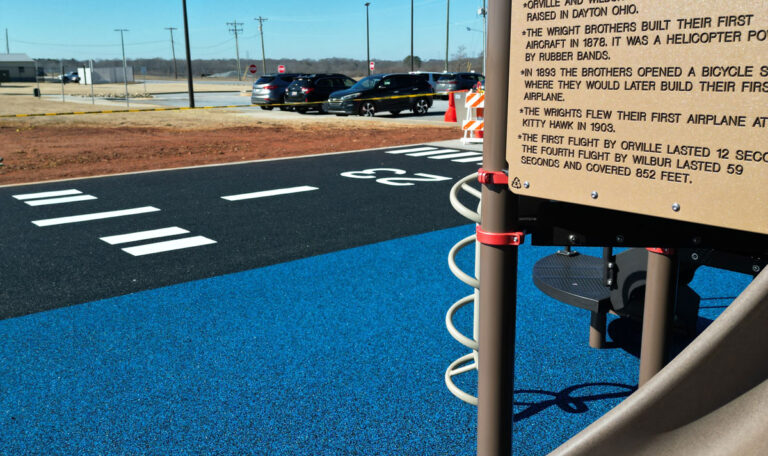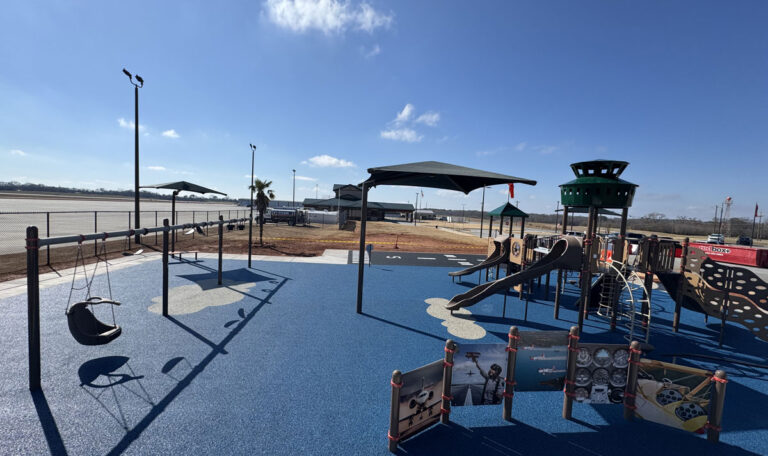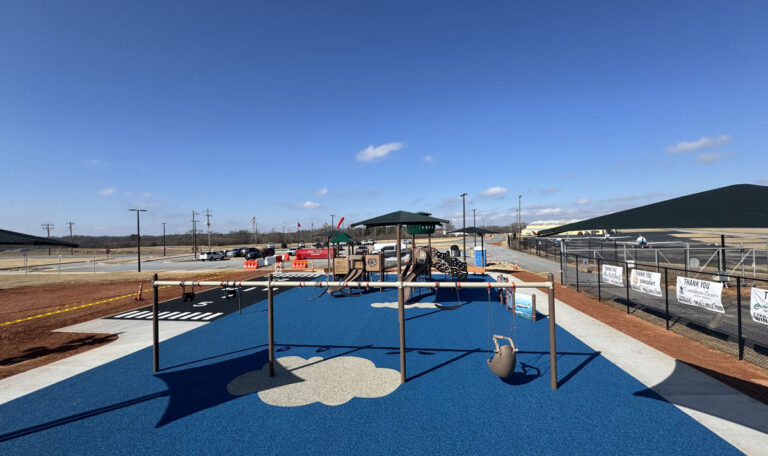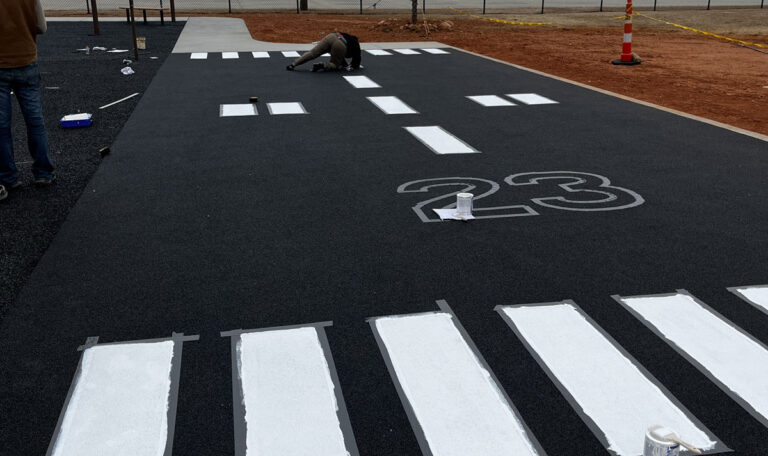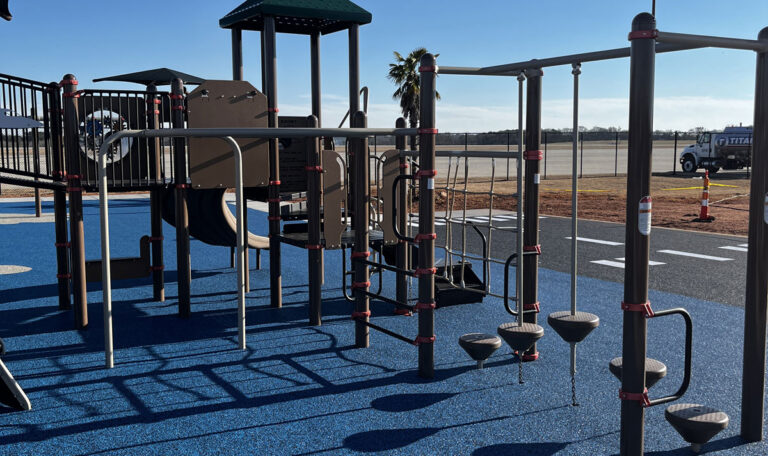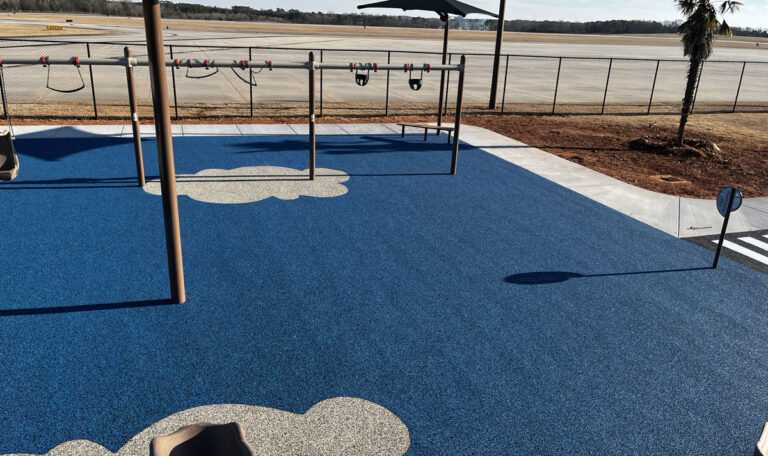Loose fill playground surfacing is crucial in ensuring children’s safety during playtime. When it comes to playground safety, selecting the right surfacing can significantly reduce the risk of injuries. Falls to a playground surface are responsible for about 70% of all playground injuries, making this decision even more essential. Here’s what you need to know about loose fill playground surfacing:
- Safety: Provides cushioning to minimize injuries from falls.
- Materials: Includes wood chips, engineered wood fiber, pea gravel, and shredded rubber.
- Maintenance: Requires regular upkeep to maintain effectiveness and safety.
- Cost: Generally more affordable initially compared to unitary surfacing options.
- Accessibility: Some materials may be difficult for wheelchairs and mobility devices to steer.
Understanding these key aspects can help facility managers like you make informed decisions aligned with safety and sustainability goals.
I’m Landon Olson, your guide to choosing the best playground surface. With expertise in changing scrap tires into environmentally friendly rubber surfacing, I am passionate about promoting loose fill playground surfacing as a safe, cost-effective solution. Join me as we dig further into making playgrounds safer and more sustainable for everyone.

Handy loose fill playground surfacing terms:
– installing rubber mulch
– rubber mulch for playset
– softfall rubber bunnings
Understanding Loose Fill Playground Surfacing
When it comes to loose fill playground surfacing, understanding the materials involved and their impact on safety and accessibility is key. Loose-fill materials are designed to cushion falls and are generally more affordable upfront. However, they require regular maintenance to ensure they remain effective and safe.
Types of Loose Fill Materials
- Wood Chips: These are natural and affordable. Wood chips are popular for their natural look and feel. They provide good shock absorbency but can decompose over time, needing regular replenishment.
- Engineered Wood Fiber (EWF): EWF is a refined version of wood chips. It provides a smoother surface and better ADA compliance compared to regular wood chips. However, it still needs regular maintenance and can compact over time, reducing its effectiveness.
- Pea Gravel: This material is durable and provides excellent drainage. However, it’s not recommended for areas with high fall heights due to lower shock absorbency. Pea gravel can also be challenging for wheelchairs and mobility devices to steer.
- Shredded Rubber: Made from recycled tires, shredded rubber offers excellent shock absorption and is durable. It does not decompose, reducing the need for frequent replenishment. Shredded rubber is also ADA compliant, making it a great choice for accessibility.
Safety and Accessibility Considerations
Safety is the top priority for any playground surface. Loose-fill materials are designed to absorb shock from falls, reducing the risk of injuries. However, they must be maintained at the recommended depth, usually 12 inches, to be effective. Regular inspections are necessary to ensure the material hasn’t compacted or been displaced.
Accessibility is another important factor. While some loose-fill materials like EWF and shredded rubber are ADA compliant, others like pea gravel can pose challenges for mobility devices. It’s crucial to choose materials that provide easy navigation for all children, including those with mobility challenges.

By understanding the types of loose fill playground surfacing and their safety and accessibility considerations, you can make informed decisions that balance cost, safety, and inclusivity.
Comparing Loose Fill and Unitary Surfacing
When deciding on playground surfacing, it’s important to weigh the advantages and disadvantages of loose fill versus unitary options. Each type has unique attributes in terms of cost, durability, maintenance, and accessibility.
Pros and Cons of Loose Fill Surfacing
Affordability: Loose fill materials, such as wood chips and shredded rubber, are generally more budget-friendly upfront. This makes them an attractive option for schools and community parks with limited budgets.
Maintenance: Regular upkeep is crucial for loose fill surfacing. Materials like wood chips and engineered wood fiber (EWF) compact over time, reducing their effectiveness. Frequent replenishment is needed to maintain the recommended depth of 12 inches for safety. Loose fill can also harbor debris and foreign objects, requiring regular inspections and clean-ups.
Accessibility: While some loose fill materials like shredded rubber offer good ADA compliance, others like pea gravel can be difficult for wheelchairs to steer. It’s important to consider the ease of movement for all children when selecting a material.
Durability: Loose fill materials vary in longevity. While shredded rubber is durable and doesn’t decompose, wood chips and EWF can break down over time, necessitating more frequent replacement.
Pros and Cons of Unitary Surfacing
Initial Cost: Unitary surfaces, including poured-in-place rubber and rubber tiles, have a higher upfront cost compared to loose fill options. However, they are often considered a long-term investment due to their durability.
Longevity: Unitary surfaces are known for their resilience. They can withstand heavy use and harsh weather without significant wear, reducing the need for frequent replacement. This durability can make them more cost-effective over time.
Maintenance: These surfaces require less frequent maintenance compared to loose fill. However, they are not maintenance-free. Over time, unitary surfaces can develop issues like pooling water or surface degradation, which need to be addressed to maintain safety.
Accessibility: Unitary surfacing provides excellent accessibility. Its smooth, even surface is ideal for wheelchairs and mobility devices, ensuring all children can enjoy the playground.
By comparing the pros and cons of loose fill and unitary surfacing, you can choose the best option for your playground, balancing initial costs with long-term benefits and ensuring safety and accessibility for all users.
Maintenance and Longevity of Loose Fill Surfacing
Best Practices for Maintenance
To keep loose fill playground surfacing safe and effective, regular maintenance is essential. Here’s how you can ensure your playground remains a safe haven for children.
Regular Inspections: Conducting frequent inspections is key. Look for areas where materials have been displaced or compacted. Walk around to spot any potential hazards like debris, sharp objects, or foreign materials that may have mixed with the surfacing.
Material Replenishment: Loose fill materials like wood chips and engineered wood fiber (EWF) need consistent replenishment. Over time, these materials break down and scatter, reducing their cushioning effect. Aim to maintain a depth of at least 9 inches to protect against falls, as recommended by ASTM standards.

Environmental Factors: Weather can impact loose fill surfacing. Rain can wash away materials, and wind can cause uneven distribution. After storms or strong winds, check the playground to ensure materials are evenly spread and at the correct depth.
Depth Checks: Regularly check the depth of your loose fill surfacing. Use a ruler or depth gauge to ensure it meets the recommended thickness for safety. Areas under swings or slides may need extra attention as they tend to wear down faster.
Debris Removal: Loose fill can easily trap debris like leaves, sticks, or trash. Make it a habit to clear away any debris during your inspections. This not only maintains the safety of the playground but also its cleanliness and appearance.
Drainage: Proper drainage is crucial to prevent water pooling, which can lead to surface erosion and create slip hazards. Ensure the playground has adequate drainage systems in place and that they are functioning properly, especially after heavy rains.
By following these best practices, you can extend the life of your loose fill playground surfacing and ensure it continues to provide a fun, safe environment for children to play.
Next, we’ll dive into some frequently asked questions about loose fill playground surfacing, including recommended depths, accessibility impacts, and environmental concerns.
Frequently Asked Questions about Loose Fill Playground Surfacing
What is the recommended depth for loose-fill materials?
When it comes to keeping children safe on playgrounds, loose fill playground surfacing plays a crucial role. The American Standard Testing Methods (ASTM) recommends maintaining a depth of at least 9 inches for materials like wood chips or engineered wood fiber. This depth is essential to protect children from falls, offering shock absorbency for falls from heights up to 10 feet. For surfaces like Loose-Fill Rubber Playground Nuggets, a depth of 6 inches is IPEMA rated for a fall height of up to 17 feet. Regularly checking and replenishing the surface depth is key to maintaining its protective qualities.
How does loose-fill surfacing impact accessibility?
Accessibility is a vital consideration for playgrounds, ensuring all children can play safely. While traditional wood chips may not be the best for wheelchair navigation, engineered wood fiber (EWF) is a better option. It’s more compact and interlocks well, making it easier for wheelchairs and other mobility devices to move across. Loose-Fill Rubber Playground Nuggets are also ADA compliant, as they pass the Wheelchair Accessibility Test ASTM F1951. This ensures that the playground is inclusive, welcoming children with varying mobility needs.
Are there environmental concerns with using rubber mulch?
Rubber mulch, such as Loose-Fill Rubber Playground Nuggets, is made from recycled materials, specifically post-consumer automotive tires. This recycling process not only helps reduce waste but also gives the product its durable, impact-absorbing properties. Rubber mulch meets or exceeds safety standards set by the Consumer Products Safety Commission (CPSC) and passes tests for hazardous metals and total lead content. Using recycled rubber mulch is an environmentally friendly choice that also ensures a safe play surface for children.
These FAQs address some of the most common concerns about loose fill playground surfacing. Understanding these aspects helps ensure playgrounds are safe, accessible, and environmentally responsible.
Conclusion
At Replay Surfacing Inc., we believe that playground safety shouldn’t come at the expense of our planet. Our commitment to changing environmental hazards into sustainable solutions is at the heart of everything we do. By recycling tires into durable and customizable loose fill playground surfacing, we not only provide safe play areas but also contribute to a greener planet.
Our Loose-Fill Rubber Playground Nuggets are a testament to this commitment. Made from post-consumer automotive tires, they offer a resilient, impact-absorbing surface that meets stringent safety standards. This ensures that children can play freely and safely, while parents and caregivers have peace of mind knowing that the playground is backed by the highest safety standards.
Sustainability is a core value at Replay Surfacing. By choosing our products, you are not just enhancing playground safety; you’re also supporting an eco-friendly initiative that reduces waste and promotes recycling. Our surfaces are designed to withstand the test of time, requiring minimal maintenance while maintaining their vibrant appearance.
Playgrounds are more than just play areas—they’re spaces where communities come together. With our ADA-compliant surfaces, we ensure that every child, regardless of mobility challenges, has the opportunity to enjoy these spaces. Our surfacing solutions are custom to meet your community’s unique needs, combining safety, sustainability, and style.
Ready to make your playground safer and greener? Contact us today to learn more about how Replay Surfacing Inc. can help transform your recreational space with our innovative solutions. Let’s build a safer, more sustainable playground together!

